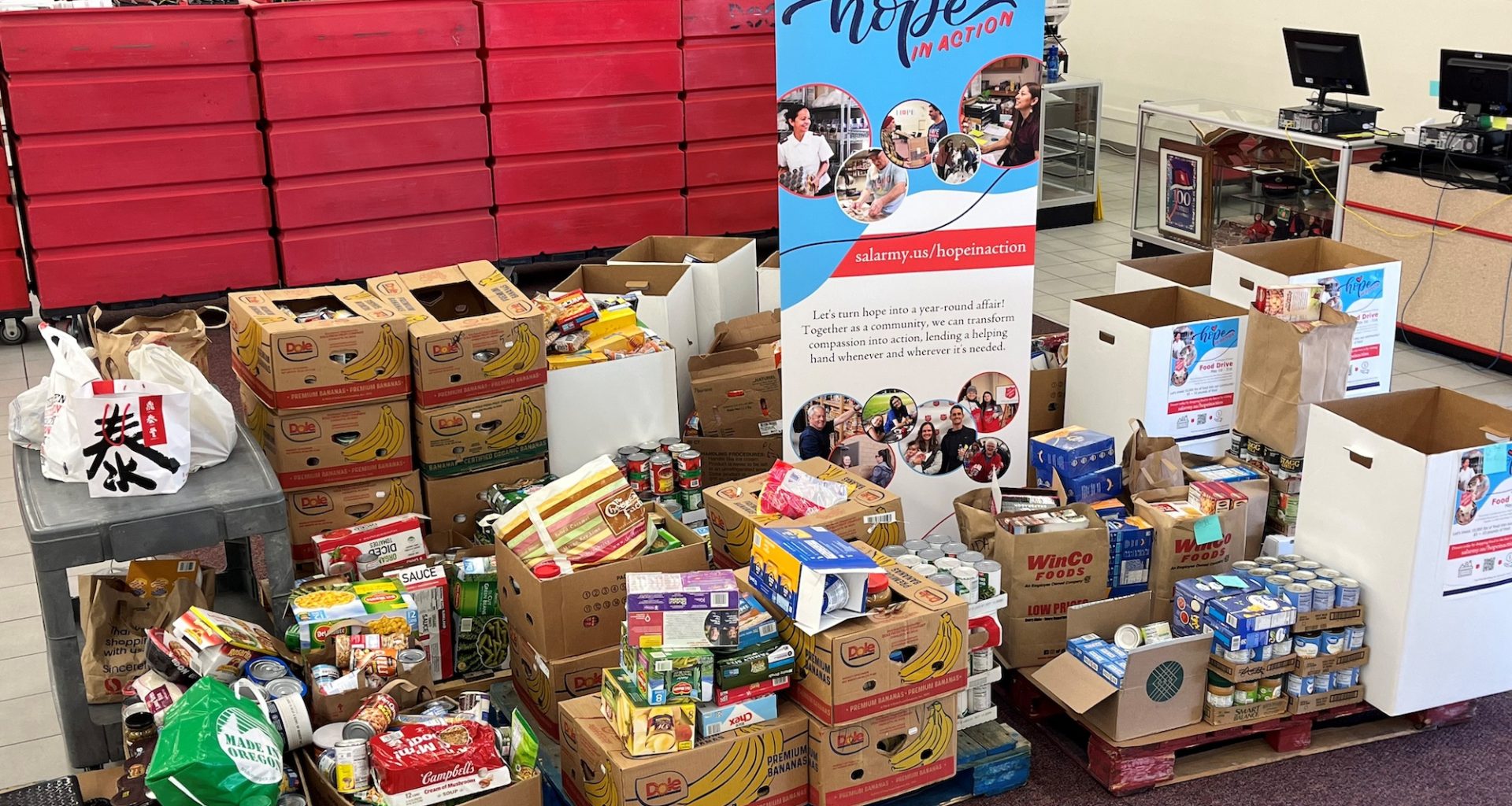In Washington County, 10 percent of families experienced hunger or food insecurity as of 2022, according to Feeding America.
For the better part of 30 years, Janet Scherer hasn’t had much to call her own. But soon, she will have something many people take for granted—a permanent address.
It’s been an elusive pursuit for a woman who raised two daughters mostly in shelters or on the streets. Now, as she enters senior adulthood, Scherer is about to get her first apartment in decades.
“To see someone who’s had such a life be able to be stable in housing—which is a major impact on a person—is really great,” said Regina Burck, a clinician for a Hillsboro, Oregon behavioral health agency assisting Scherer. “Part of what’s had her be successful is that she’s had her food needs met.”
Those food supplies came from The Salvation Army’s HOPE Center in Washington County, which provided Scherer with the groceries to cook her meals in transitional housing where she saved up money for her own place.
“Groceries have been one of the highest costs and so we’re seeing more and more families come into the pantry,” said Christopher Abosamra, Community Resources Manager for the Hope Center. “When we first started the pantry, it was maybe 200 to 300 families a month, and now we’re getting at least 500 families.”
The Hope Center is part of The Salvation Army’s efforts to ramp up expanded services in Washington County. Now in its first phase, the local service center is focusing on food insecurity by developing its pantry to meet growing community demand.
The process has been augmented by the center’s first-ever “Hope in Action” food drive, held in May.
“We’re seeing a lot of need in the community for food, especially in the summer months, when kids are home from school,” Abosamra said. “There’s an added burden for the families.”
That burden is underscored by the U.S. Department of Agriculture’s 2023 Household Food Security Report, which found one in five children live in poverty—more than double the rate just two years earlier. Part of the squeeze is driven by stubborn inflation which, though down from its June 2022 high of 9.1 percent, still proves to be a challenge for food costs.
“We are grateful for the support of the community and our partners in making this a success.”
Adam Harvey, Hope Center Director
In Washington County, 10 percent of families experienced hunger or food insecurity as of 2022, according to Feeding America. That same report indicated 51 percent of the county’s population had incomes below 200 percent of the federal poverty threshold, often classified as low income.
That income gap led the Hope Center to organize the food drive, which generated 5,500 pounds of food to supplement its stock for struggling families. Besides the individual donations, local grocery stores, churches and businesses collaborated with the Hope Center.
“We are grateful for the support of the community and our partners in making this a success,” said Hope Center Director Adam Harvey. “We are looking forward to being bigger and better when we tackle this initiative next year.”
Abosamra said the drive served a dual purpose of meeting practical needs while also reminding the community The Salvation Army is here to serve.
“We tried to gear it not just toward people in need, but people who may be able to help us for the people who are in need,” he said.
The message appears to have been received.
“We’ve been seeing an uptick in donations, whether it’s monetary or food, and also just more people know where we are,” he said.
And Burck is grateful for The Salvation Army’s expanded focus, saying the pantry provides nutritious food she can pick up on behalf of Scherer, who has transportation and mobility limitations.
“She doesn’t have to stress about food, so she can have her money to go on the bus if she needs to go to the doctor, or she can have money to buy herself something to wear, or she has a few extra dollars that she can spend the way she wants to so she can feel like a human being,” Burck said.
“I’m happy for her, you know. I’m happy to see her having access to these resources so she is able to thrive,” Burck said. “This is why I do what I do, and this is why we work with The Salvation Army so well because I think they get that.”
Do Good:












